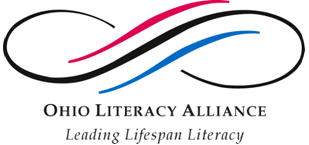
Keyword - Culturally Responsive Instruction
- Culturally responsive instruction
- Awareness, understanding, and valuing of sociocultural aspects of literacy, including language, gender, race, and class
Bean, T., & Readence, J. (2002). Adolescent literacy: Charting a course for successful futures as lifelong learners. Reading Research and Instruction, 4, 203-210.
Boyd, F. B. (2002). Conditions, concessions, and the many tender mercies of learning through multicultural literature. Reading Research and Instruction, 42, 58-92.
Brock, C. (2000). Creating possibilities to read others’ worlds: Exploring a mediator’s role in bridging cultural boundaries. Reading and Writing Quarterly, 16, 361-379.
Cammack, D. W. (2002). Literacy, technology, and a room of her own: Analyzing adolescent girls’ online conversations from historical and technological literacy perspectives. In D. Schallert, C. Fairbanks, J. Worthy, B. Maloch, & J. Hoffman (Eds.), Fifty-first yearbook of the National Reading Conference (pp. 129-141). Chicago: National Reading Conference.
Coles, M., & Hall, C. (2002). Gendered readings: Learning from children's reading choices. Journal of Research in Reading, 25, 96-108.
Duff, P. A. Intertextuality and hybrid discourses: The infusion of pop culture in educational discourse. Linguistics and Education, 14, 231-276.
Egan-Robertson, A. (1998). Learning about culture, language, and power: Understanding relationships among personhood, literacy practices, and intertextuality. Journal of Literacy Research, 30, 449-487.
Hammond, J., & Macken-Horarik, M. (1999). Critical literacy: Challenges and questions for ESL classrooms. TESOL Quarterly, 33, 528-544.
Hicks, D. (2004). Back to Oz? Rethinking the literary in a critical study of reading. Research in the Teaching of English, 39, 63-84.
Ivey, G., & Broaddus, K. (2001). "Just plain reading": A survey of what makes students want to read in middle school classrooms. Reading Research Quarterly, 36, 350-377.
Kamberelis, G.., & Scott, K. D. (1992). Other people's voices: The coarticulation of texts and subjectivities. Linguistics and Education, 4, 359-403.
Lau, K., & Chan, D. (2003). Reading strategy use and motivation among Chinese good and poor readers in Hong Kong. Journal of Research in Reading, 26, 177-190.
Love, K., & Hamston, J. (2004). Committed and reluctant male teenage readers: Beyond bedtime stories. Journal of Literacy Research, 36, 335-400.
Moje, E. B., & Ciechanowski, K. M., Kramer, K., Ellis, L., Carrillo, R., & Collazo, T. (2004). Working toward third space in content area literacy: An examination of everyday funds of knowledge and discourse. Reading Research Quarterly, 39, 38- 70.
Moss, G., & McDonald, J. (2004). The borrowers: Library records as unobtrusive measures of children's reading preferences. Journal of Research in Reading, 27, 401-412.
Oldfather, P., & Thomas, S. (1998). What does it mean when high school teachers participate in collaborative research with students on literacy motivations? Teachers College Record, 99, 647-691.
Peterson, S., & Calovini, T. (2004). Social ideologies in grade eight students' conversation and narrative writing. Linguistics and Education, 15, 121-139.
Pomlun, M., Sunbye, N., & Kelley, J. (1999). Exploring gender differences to constructed-response reading items. Scientific Studies of Reading, 3, 55-68.
Short, D. (1994). Expanding middle school horizons: Integrating language, culture, and social studies. TESOL Quarterly, 28, 581-608.
Stainthorp, R., Hughes, D. (2004). What happens to precocious readers' performance by the age eleven? Journal of Research in Reading, 27, 357-372.
Vyas, S. (2004). Exploring bicultural identities in Asian high school students through the analytic window of a literature club. Journal of Adolescent and Adult Literacy, 48, 12-23.
| Back to Keywords | HOME |